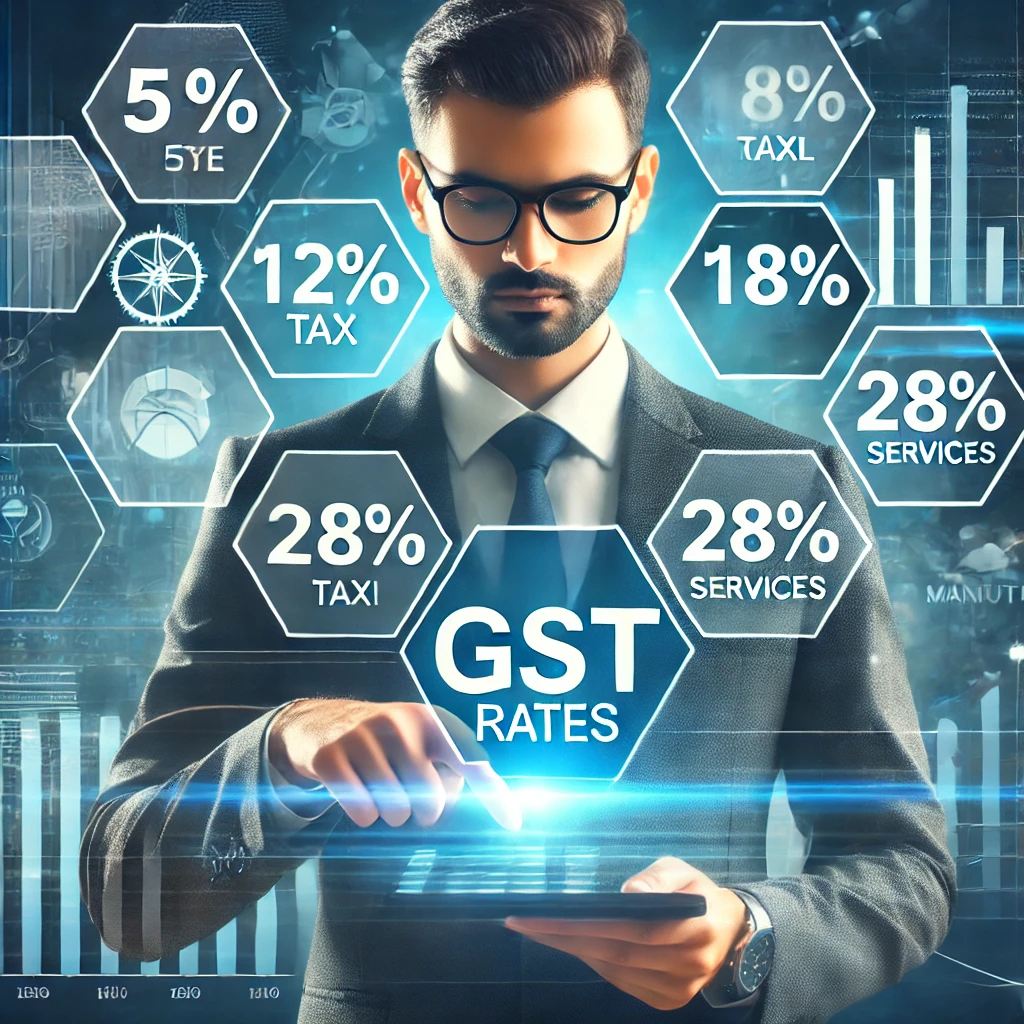Goods and Services Tax (GST) is a comprehensive indirect tax levied on the supply of goods and services in many countries, including India. Since its implementation, GST has streamlined the taxation system by replacing multiple indirect taxes such as VAT, excise duty, and service tax. One of the key aspects of GST is its rate structure, which varies depending on the nature of goods and services. Understanding these rates and their implications is crucial for businesses to ensure compliance, optimize pricing strategies, and manage cash flow effectively.
What are GST Rates?
GST rates are categorized into multiple slabs, which are applied based on the type of goods and services. In India, GST rates fall under five main slabs: 0%, 5%, 12%, 18%, and 28%. Essential items such as food grains, fresh vegetables, and healthcare services are exempted from GST, while luxury goods and sin products attract the highest rate of 28%. In addition, certain items also attract a cess, which is used for specific welfare programs.
GST Rate Categories
- Exempted Goods and Services (0%) – Basic necessities such as milk, fresh fruits, educational services, and healthcare are exempt from GST to ensure affordability.
- 5% GST Slab – This category includes essential goods like packaged food items, transportation services, and household necessities.
- 12% GST Slab – Items such as processed food, textiles, and business services fall under this category.
- 18% GST Slab – Standard tax rate for most goods and services, including electronic appliances, financial services, and hospitality.
- 28% GST Slab – Luxury items, high-end cars, aerated drinks, and gambling services are taxed at this highest slab.
How GST Rates Impact Businesses
The GST rate applicable to a business directly affects pricing, profitability, and compliance requirements. Understanding these implications is crucial for efficient financial planning and decision-making.
Pricing and Profitability
The GST rate influences the final cost of products and services. If a product attracts a high GST rate, businesses must decide whether to absorb the cost or pass it on to consumers. For instance, businesses dealing with luxury items must adjust their pricing strategies to maintain competitiveness while ensuring compliance with tax regulations.
Input Tax Credit (ITC) Benefits
One of the biggest advantages of GST is the Input Tax Credit (ITC) system, which allows businesses to claim credit for taxes paid on inputs. Businesses operating in higher GST slabs can claim ITC, reducing their tax burden. However, industries dealing with exempt goods do not benefit from ITC, affecting their cost structure.
Cash Flow and Working Capital
Businesses must manage their cash flow effectively, as GST requires timely payments. High GST rates on goods and services can impact working capital, particularly for small businesses. Understanding these implications helps companies structure their financial operations more efficiently.
Compliance and Documentation
Different GST rates necessitate rigorous compliance, including accurate invoicing, return filings, and tax payments. Businesses dealing in multiple tax slabs must maintain proper documentation to avoid penalties and audits.
Industry-Specific Impact of GST Rates
Different industries experience varied impacts of GST rates:
- Manufacturing Sector: Benefits from ITC but faces challenges with high working capital requirements.
- Retail Industry: Must strategize pricing to balance customer affordability and tax compliance.
- Service Sector: Subject to an 18% standard rate, impacting pricing structures and competitiveness.
- E-commerce: Complex GST compliance due to inter-state transactions and multiple tax slabs.
Conclusion
Understanding GST rates is essential for businesses to optimize pricing, ensure compliance, and manage cash flow efficiently. While GST has simplified taxation, its rate structure influences profitability and operational costs. Businesses must stay updated with changes in tax slabs and regulations to make informed financial decisions and maintain a competitive edge. Proper planning and a thorough understanding of GST implications can help businesses navigate challenges and maximize benefits.
Disclaimer:The content provided in this blog post is for informational purposes only. The opinions expressed here are those of the author and do not necessarily reflect the views or opinions of Business Rahi. While we strive to ensure the accuracy and reliability of the information presented, we cannot guarantee the completeness, reliability, or suitability of the content for any particular purpose. Any reliance you place on such information is strictly at your own risk.
Buisiness Rahi is not responsible for any losses or damages arising from the use of the information shared in this blog post. We may feature links to external websites, but these do not constitute endorsements or recommendations. We encourage readers to conduct their own research and consult with professionals before making any business decisions.
For more information about our brand or policies, please refer to our official website or contact us directly.

